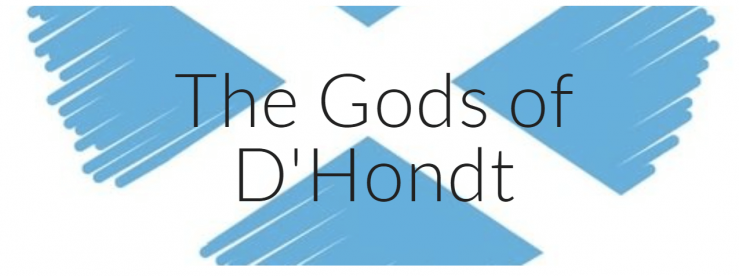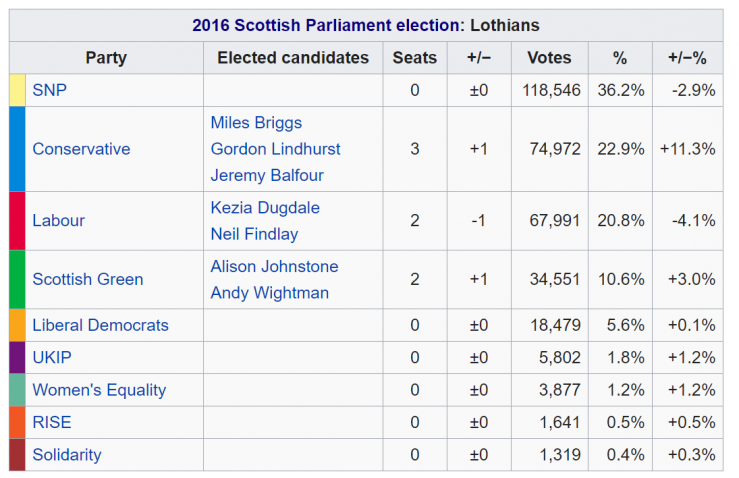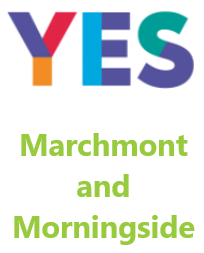
A simple introduction
The D'Hondt system, used to allocate 56 of the 129 seats in the Scottish Parliament (commonly known as the ‘list seats’), must be one of the most mis-spelt and misunderstood electoral systems ever created and yet at heart it is very simple.
If you win on the constituencies, you lose on the list.
OK, not quite as simple as that. Perhaps the best way to explore it is by investigating the curious tale of the 'lost' list votes of the SNP.
Are you sitting comfortably? Then we'll begin.
Let's look at the 2016 results in the Lothian region.
In 2016, the SNP gained 36.2% of the list votes in Lothian. How many regional list seats did they win? The intuitive answer is, since there are seven list seats in the region, surely they must have gained at least two, right?
Wrong.
The results are shown as below.

Source: Lothian (Scottish Parliament electoral region) - Wikipedia
How did a party with comfortably the largest number of list votes win no list seats?
As the table below illustrates, because the SNP won six out of the nine constituency seats in Lothian, their list votes were immediately divided by 7 (six seats plus one).

The Conservatives, having won just one constituency seat, began with a divisor of only 2 (one seat plus one) They won the first Lothian list seat but it meant that in the second 'round' their divisor was incremented to 3.
The Greens then pipped Labour in the second round, which meant their divisor increased to 2 for the third round. And so on, until all seven additional list seats were allocated.
It was a close thing by the seventh round, but the divisor was just too much for the SNP, and they came out empty handed. This phenomenon was replicated across Scotland, the most dramatic example being in Glasgow, where 44.8% of the list vote still wasn't enough to give the SNP a single list seat.
This is D'Hondt's revenge on the constituency winners, relentlessly chipping away at the 'winner takes all' nature of the ‘first past the post’ constituency elections, to smooth things back to proportionality.
Even by 2016 this phenomenon was so well known that a number of the smaller independence-supporting parties sought to persuade SNP voters to vote for them on the list and not to 'waste' their list vote on the SNP. This might produce a larger independence-supporting majority in Holyrood, an important advantage when attempting to persuade an intransigent UK government to co-operate with the holding of another independence referendum. Those opposed to the idea characterised it as trying to 'game' the system. This is not what the Gods of D'Hondt would want, who endeavour to square the circle of having a 'first past the post' system combined with proportional representation.
Both of these positions are flawed. A vote cast with conscious intention can never be described as 'wasted'. It is an expression and record of an individual's political value system. On the other hand, neither can the idea of casting the list vote for an alternative party be described as a form of cheating. The system itself explicitly invites such a choice and SNP voters are under no obligation to effectively vote for Unionist parties. It is no different to the kind of tactical voting that takes place in the UK 'first past the post' system, where, for example, a Liberal Democrat voter, knowing her party cannot win in the constituency, may switch her vote to the Conservatives, in order to try to keep out Labour.
The marked difference between tactical voting in the 'first past the post' system and the D'Hondt system, is that in the first, it is a choice associated with those who would naturally support one of the smaller parties; whereas in Scotland it is currently a dilemma faced by those who vote for the strongest party.
Further Information
An in-depth explanation of the D’Hondt system by George Kerevan
Everything you wanted to know about D’Hondt voting system before Holyrood election | The National
D’Hondt explained with Pets!
An introduction to the D'Hondt method using Pet Elections - YouTube

